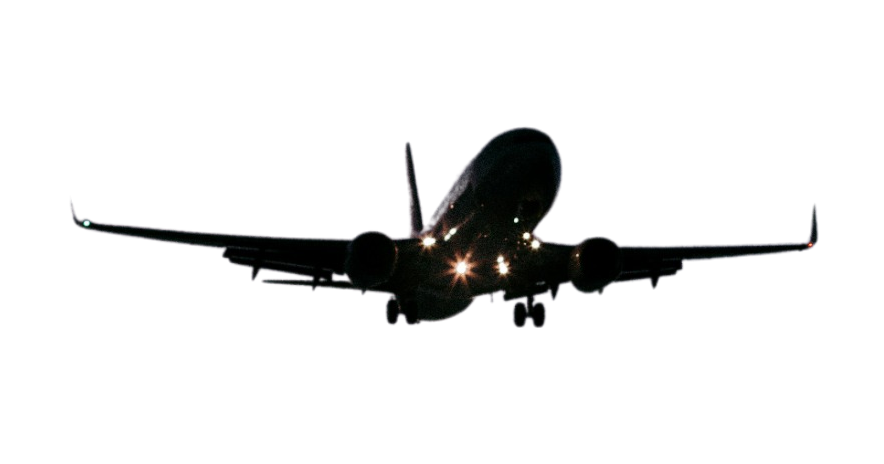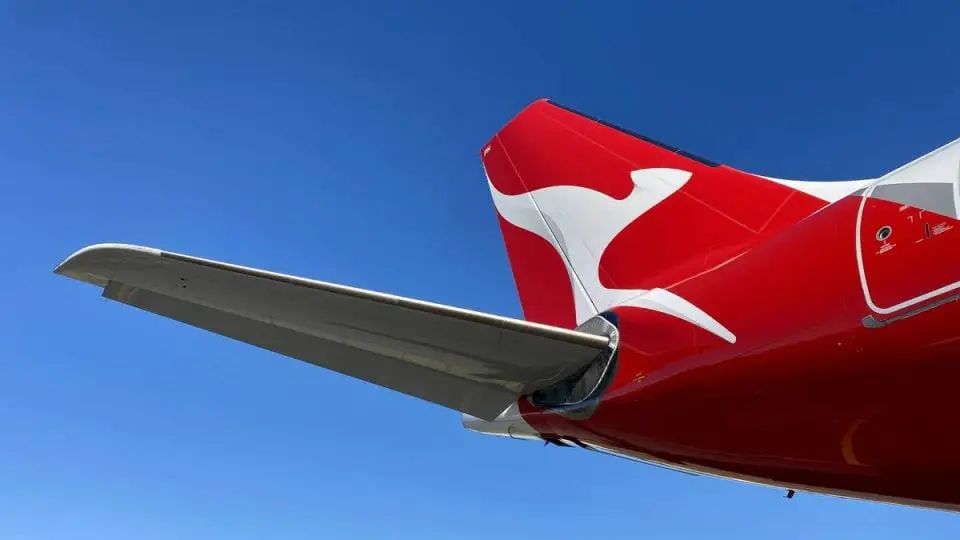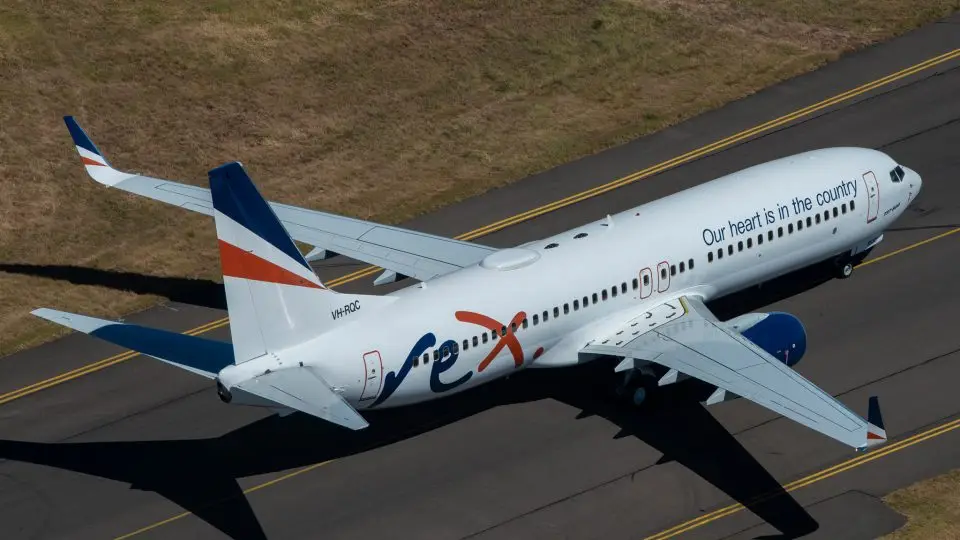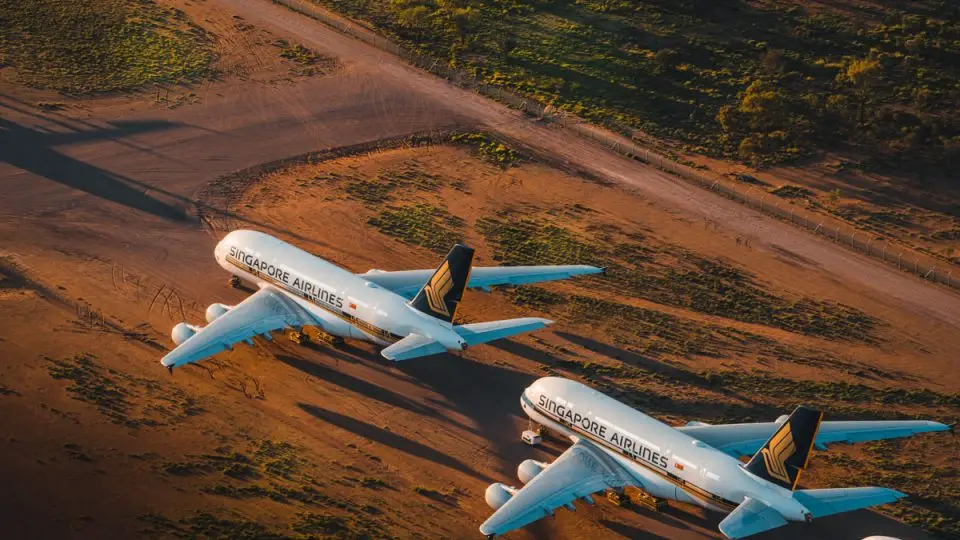Virgin Australia In-flight WiFi Ultimate Guide
Stay connected mid-flight with Virgin Australia’s in-flight Wi-Fi for seamless browsing and entertainment onboard.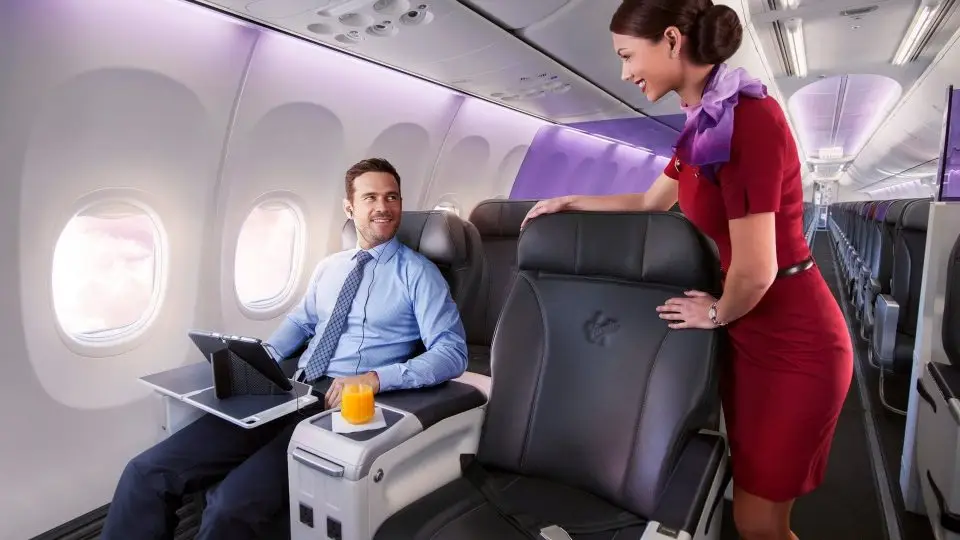
Virgin Australia’s inflight WiFi offers a fast and (mostly) free way to stay connected above the clouds. With inflight WiFi connectivity is now available on most domestic, trans-Tasman and long-haul international flights with Virgin Australia, plus the availability of the service is only improving. This beginner’s guide covers some of the main questions travellers have about Virgin Australia’s inflight WiFi.
Which Aircraft are fitted with WiFi?
You will have inflight WiFi connectivity on most domestic and international flights with Virgin Australia. If your aircraft is fitted with the system, you will find an info card in your seat pocket. As of March 2020, the majority of Virgin Australia’s fleet has been fitted with inflight WiFi connectivity, with WiFi upgrades to Boeing 737 and Airbus A330 aircraft over 80% complete. Unfortunately, regional turboprops and jets won’t be fitted with inflight WiFi connectivity.
Here’s the stats at the time of publication:
- Boeing 737: 60 out of 85 B737s have inflight WiFi
- Airbus A330: 5 out of 6 A330s have inflight WiFi
- Boeing 777: all B777s have inflight WiFi
- ATR72, Airbus A320, Fokker 100: won’t get inflight WiFi
How much does it cost?
For all domestic and trans-Tasman flights, Virgin Australia offers complimentary inflight WiFi access. On domestic flights, Virgin Australia offers unlimited free WiFi at speeds suitable for basic use such as web browsing and social media. For flights to and from New Zealand, 15 minutes of free WiFi is offered.
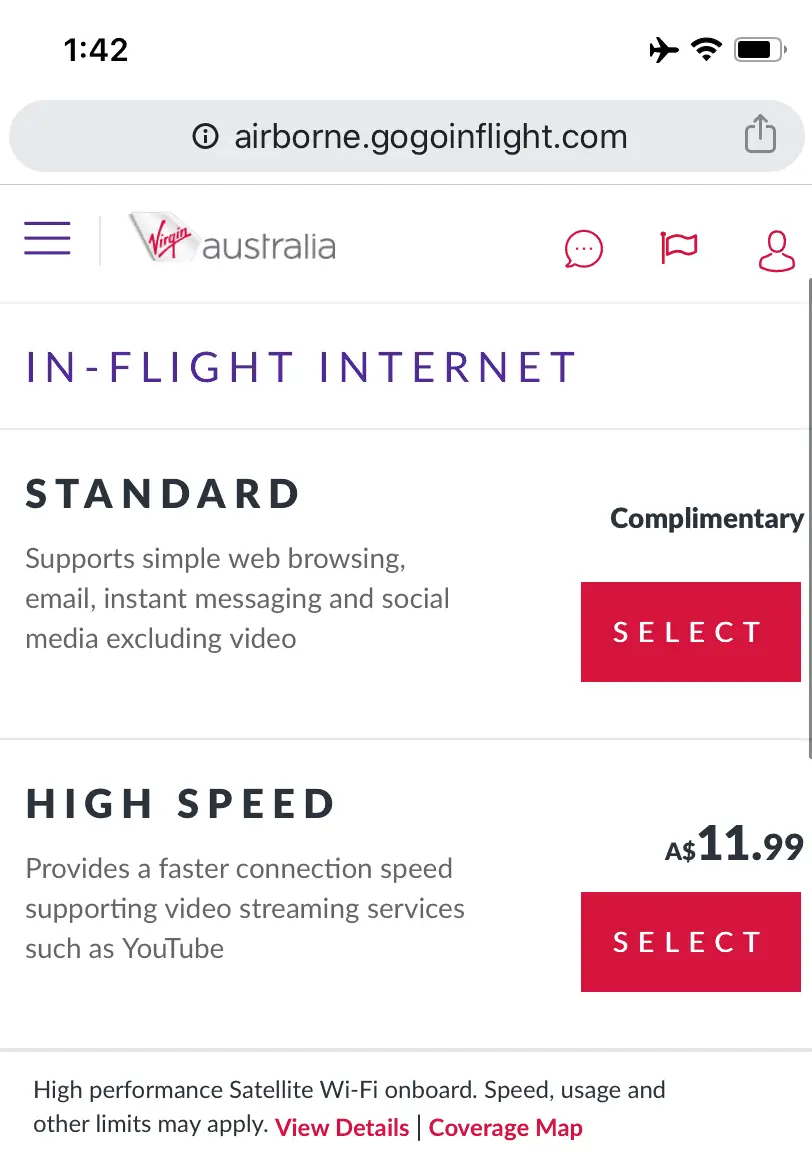
Virgin Australia also offers paid options if you want faster speeds or unlimited WiFi:
- Domestic: $11.99 for a high-speed plan
- Trans-Tasman and short-haul international: from $6.99 per hour; $12.99 for the flight
- long-haul international: from $8.99 per hour; $19.99 for the flight
Virgin Australia’s own website is free at all times on connected aircraft.
Is it any good?
Internet speeds depend on the number of travellers connected at the same time. The free domestic connection is generally capped at around 1Mbps, which is fast enough for light browsing, emails and social media. The paid plan can reach up to 13Mbps, making video streaming and downloading large files much faster.
Personally, I have found Virgin Australia’s WiFi to be excellent. Recently I clocked the free plan at 7.9Mbps down and 4.6Mbps up on a relatively full flight, much more than the 1Mbps advertised. In saying this, the system isn’t perfect. Sometimes speeds can drop or even come to a momentary standstill when multiple users are connected or when the system switches between satellites.
How do I know if my Virgin Australia flight will have WiFi?
Pretty much all Virgin Australia flights to and from Los Angeles and New Zealand should have inflight WiFi connectivity. For domestic and other short-haul international flights you will have a good chance of inflight WiFi.
You can also check Virgin Australia’s Flight Status website up to three days prior to your departure to find out if your scheduled aircraft is fitted with WiFi. Enter the flight details and check for the WiFi symbol next to your flight number. Unfortunately, this is not entirely accurate as last-minute aircraft changes happen often and the page sometimes doesn’t show aircraft which have recently been updated with WiFi.
Once onboard, you will an inflight WiFi info card in your seat pocket if your aircraft is fitted with the system:
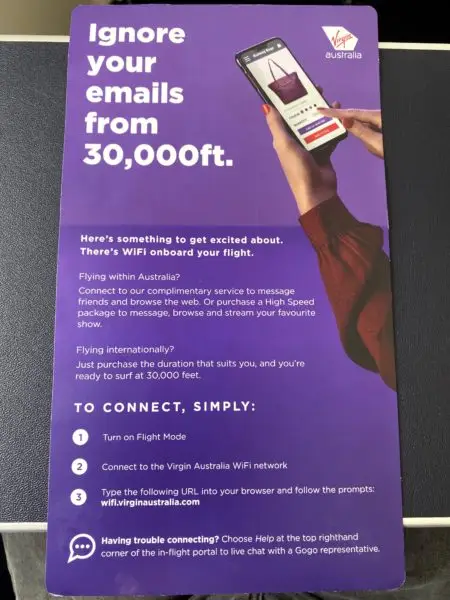
How do I connect?
You can connect to Virgin Australia inflight WiFi from any compatible device in a similar way to how you would connect to the airport WiFi network. If your aircraft is fitted, you will find an info card in your seat pocket which describes how to connect.
Step 1: Turn on flight mode and then re-enable WiFi
Step 2: Connect to the “VirginAustralia” WiFi network
Step 3: Visit wifi.virginaustralia.com and choose a plan
Step 4: Enter your email and payment details or your seat number and surname
How does it work?
Virgin Australia’s inflight WiFi is powered by tech provider Gogo using 2Ku band satellite. Ku stands for Kurz Unter, German for short under. This refers to the frequency band under the original K-band satellite frequency.
During the conversion process two antennas are fitted to the top of the fuselage. These antennas are able to rotate to point directly at the satellite.
Domestic and New Zealand flights operate using Optus’ satellites, while International flights utilise Intelsat and SES satellites.
Summing Up
Overall, Virgin Australia’s inflight WiFi is an excellent and often free service. Internet speeds will depend on the location and number of travellers connected, however it is often fast enough for light browsing, emails and social media.
Related posts


